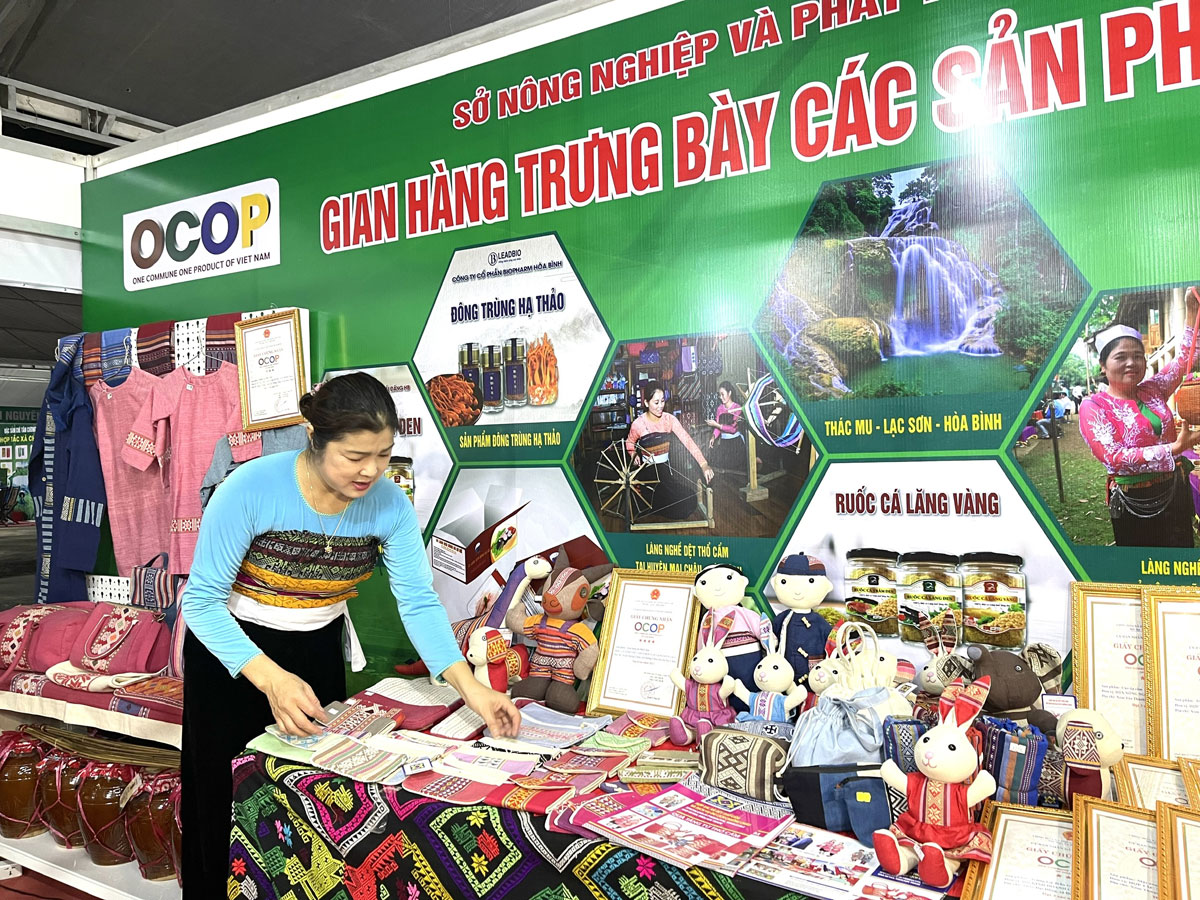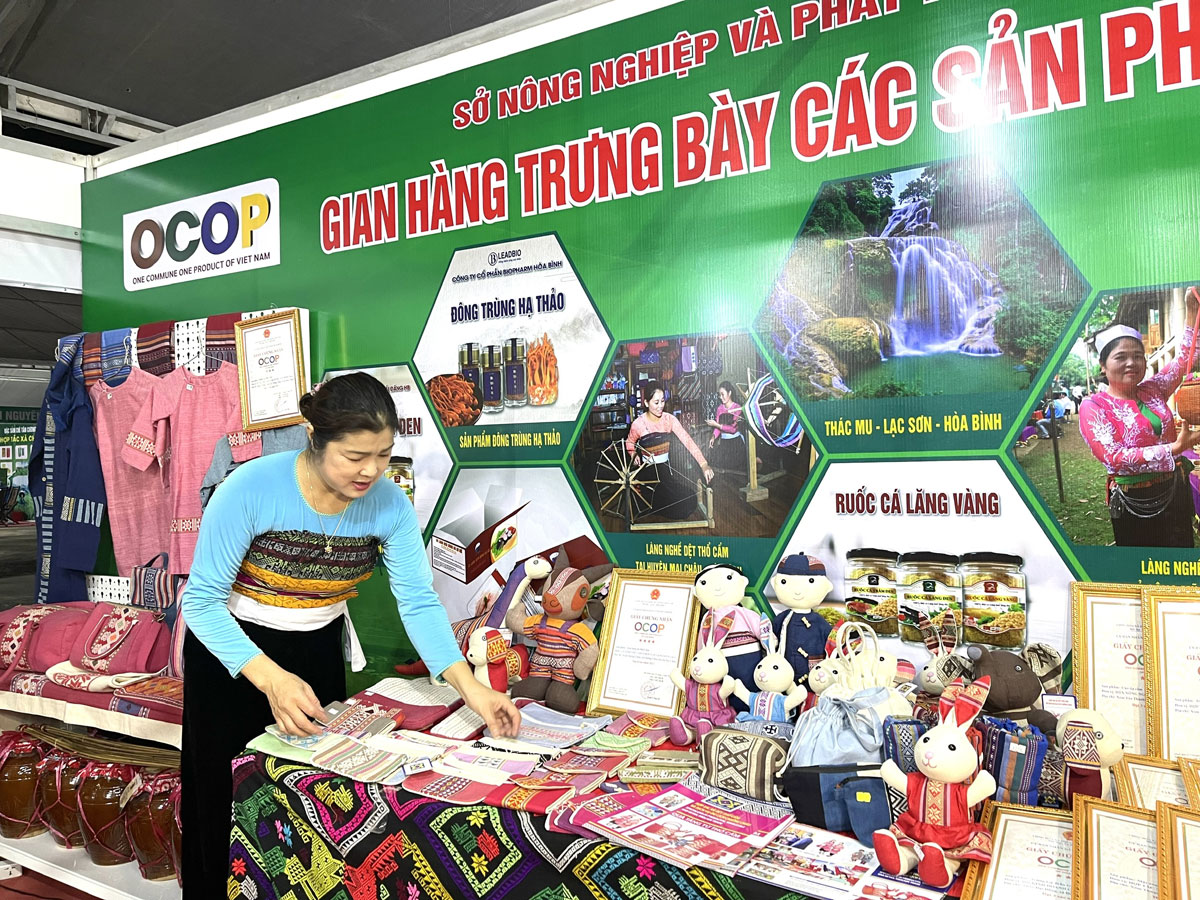
In order restore brocade weaving of the Thai ethnic group, with the support of the Japan International Cooperation Agency (JICA), the Chieng Chau Brocade Weaving and Tourism Services Cooperative was established in Chieng Chau commune (Mai Chau district) in 2009.
The Chieng Chau Brocade Weaving and
Tourism Services Cooperative has joined exhibitions
and fairs to promote its
products and expand the market.
The cooperative has continued its operation
after the JICA project concluded, and in 2013 it registered for official
establishment in line with the Cooperative Law.
Its Deputy Director Vi Thi Oanh said developing
the craft has created jobs for local residents, while preserving traditional
values. Its members have made efforts in production and
optimised local tourism advantages to popularise products to both domestic and
foreign tourists.
The cooperative has expanded its operation,
generating jobs for tens of labourers whose monthly income ranges from 3-4
million VND (123.5-164.67 USD) each. Chieng Chau brocade products have been known to
many people, especially foreigners, through fairs and exhibitions throughout
the country.
Moreover, the cooperative has coordinated with
local authorities and the farmers’ association of Chieng Chau hamlet to form a
Thai brocade weaving group within the cooperative, which aims to utilise the
existing resources, bring together weaving lovers, restore the traditional
craft, and raise income for local ethnic minority women.
After two years of operation, the group now
gathers 10 members whose skills have been improved significantly, contributing
to increasing productivity, fulfilling orders of domestic and foreign
customers. Most importantly, the members have enjoyed stable income and
improved living standards.
Pham The Anh, Chairman of the Mai Chau Farmers
Association, said the cooperative will further support the cooperative in
promoting the image of the group through exhibitions, fairs, television
channels and social networks.
With an increasingly vibrant and widespread emulation movement aimed at building cultured residential areas and cultured families, Yen Thuy District has been making steady progress toward improving both the material and spiritual well-being of its people, while fostering a civilized, prosperous, beautiful, and progressive community.
Once lacking recreational spaces and community facilities, Residential Group 2 in Quynh Lam Ward (Hoa Binh City) has recently received attention for the construction of a new, spacious, and fully equipped cultural house. The project followed the model of state support combined with public contributions in both labor and funding.
The "All people unite to build cultural life" movement, which has been effectively integrated with Kim Boi district’s socio-economic development goals, is fostering a lively spirit of emulation across local residential areas, hamlets, villages, public agencies, and enterprises. In addition, through the initiative, traditional cultural values are being preserved and promoted, while community solidarity and mutual support in poverty reduction and economic development are being strengthened.
A working delegation of the Hoa Binh provincial People’s Committee led by its Permanent Vice Chairman Nguyen Van Toan on June 11 inspected the progress of a project to build the Mo Muong Cultural Heritage Conservation Space linked to tourism services in Hop Phong commune, Cao Phong district.
Born and growing in the heroic land of Muong Dong, Dinh Thi Kieu Dung, a resident in Bo town of Kim Boi district, in her childhood was nurtured by the sweet lullabies of her grandmother and mother. These melodies deeply imprinted on her soul, becoming an inseparable part of her love for her ethnic group's culture. For over 20 years, this love for her hometown has driven Dung to research, collect, and pass down the cultural values of the Muong people to future generations.
In the final days of May, the Ethnic Art Troupe of Hoa Binh Province organized performances to serve the people in remote, mountainous, and particularly disadvantaged areas within the province. These were not just ordinary artistic shows, but they were the meaningful journeys aimed at spreading cultural values, enhancing the spiritual life of the people and contributing to the preservation of ethnic minority cultural identities.



